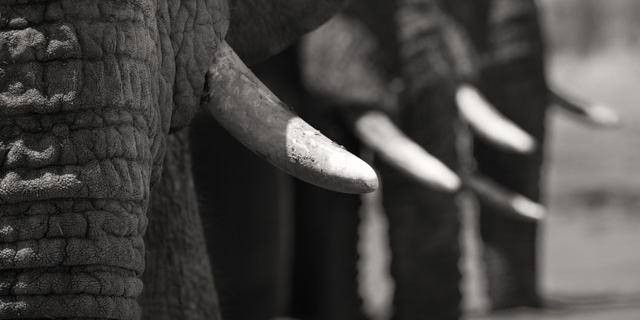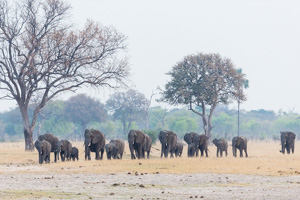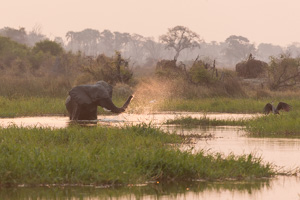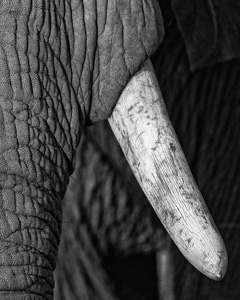
|
||
Elephant Migration in Hwange National Park While elephants are highly endangered to non-existent in much of their traditional home range across Africa, there are localized pockets of extreme over-population relative to available habitat in many parts of southern Africa.  Improving our understanding of the factors influencing elephant migration has several important implications, especially in areas of high elephant density like Zimbabwe and Botswana. Migration is essential to limit habitat degradation, but it also frequently brings elephants into conflict with neighboring communities.  In the long run, there is great hope that establishing “wildlife corridors” between conservation areas will enable elephants (and other game) to migrate from high to low concentration ecosystems, thereby relieving pressure in high-density parks and reintroducing elephants to regions where their numbers have declined. Hwange has one of the highest densities of elephants in Africa, four times what is considered optimal, and is an ideal environment in which to study the dynamics of migration. In the long run, there is great hope that establishing “wildlife corridors” between conservation areas will enable elephants (and other game) to migrate from high to low concentration ecosystems, thereby relieving pressure in high-density parks and reintroducing elephants to regions where their numbers have declined. Hwange has one of the highest densities of elephants in Africa, four times what is considered optimal, and is an ideal environment in which to study the dynamics of migration.The study's main objective is to determine how higher elephant densities and individual dominance status may influence how far from water elephants will go to forage, how this influences the quality of the patch in which they forage, and how easily they can access water. The following actions will be taken:  1. Collar 10 elephant cows with GPS collars. 1. Collar 10 elephant cows with GPS collars.2. Determine the dominance status of the study’s herds using field observation. 3. Determine resource availability and quality by regularly monitoring water presence in pans and quality of foraging patches. Also, determine local elephant densities using censuses. 4. Determine movement parameters and habitat use through elephant GPS-tracking data. 5. Determine predation risk by using field observation of lion presence and possibly lion GPS-tracking data. 6. Build comprehensive models of elephant movement and habitat use which integrate all the above-mentioned aspects (resources, dominance status, and predation risk) to disentangle their relative contributions. Let us help you plan your dream safari. call toll-free: 888.227.8311 or email us today
|
||
|


